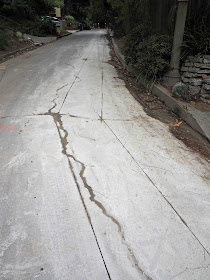If you go to the Goodreads quotation site,
you’ll find this: “Words inscribe a text in the
same way that a walk inscribes space. Writing is one way of making the world
our own, and . . . walking is another.” – Geoff Nicholson
I’ll gladly
stand by this, though I’m actually more or less paraphrasing Michel de Certeau in The
Practice of Everyday Life. It's hard to find a good picture of de Certeau walking, but here he is apparently
standing about in field, and I suppose he must have done at least some walking to
get there. But are you really sure about
that scarf, Mike?
Meanwhile a
correspondent, Jane Freeman – she’s an artist, you could check her out - draws
my attention to a quotation form Coleridge’s Biographia Literaria, in which he’s actually talking about
essay-writing, but I think it has a wider application: “The reader
should be carried forward, not merely, or chiefly, by the mechanical impulse of
curiosity, or by a restless desire to arrive at the final solution; but by the
pleasurable activity of mind, excited by the attractions of the journey itself.
Like the motion of a serpent, which the Egyptians made the emblem of
intellectual power; or like the path of sound through the air; at every step he
pauses, and half recedes, and, from the retrogressive movement, collects the
force which again carries him onward.”
No walking
there, obviously, although we know Coleridge was quite the pedestrian – check
out “The Devil’s Walk” – written with Robert Southey.
And did you know that Kate Moss now lives in Coleridge’s
old house in Highgate? No, neither did
I.
The Coleridge
quotation corresponds somehow with a couple of paragraphs I recently found in
John Berger’s Another Way of Telling. He writes, “The dog came out of the forest is a simple statement. When that story is followed by The man left the door open, the
possibility of a narrative has begun. If the tense of the second sentence is changed into The man had left the door open, the possibility becomes almost a
promise. Every narrative proposes an agreement
about the unstated but assumed connections existing between events …
“No story is like a wheeled vehicle whose contact with the road is
continuous. Stories walk, like animals
and men. And their steps are not only between narrated events but between each
sentence, sometimes each word. Every step is a stride over something not said.”
This is Berger
walking with Tilda Swinton in Quincy, the town where he lives, in France.
 |
| Photo: Sandro Kopp/Berlinale |









































